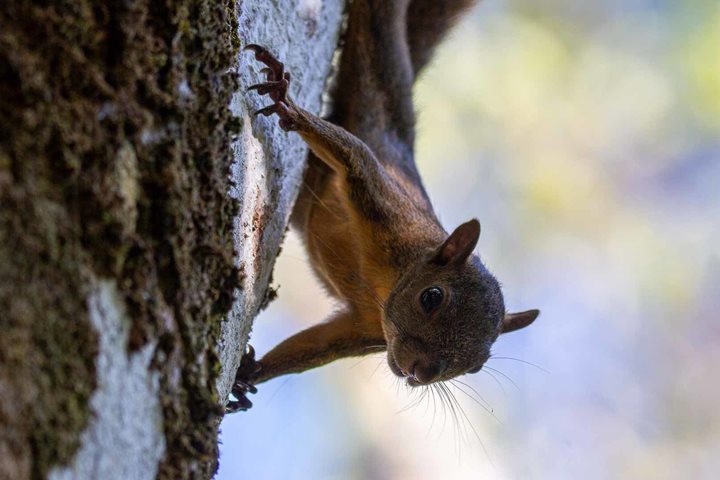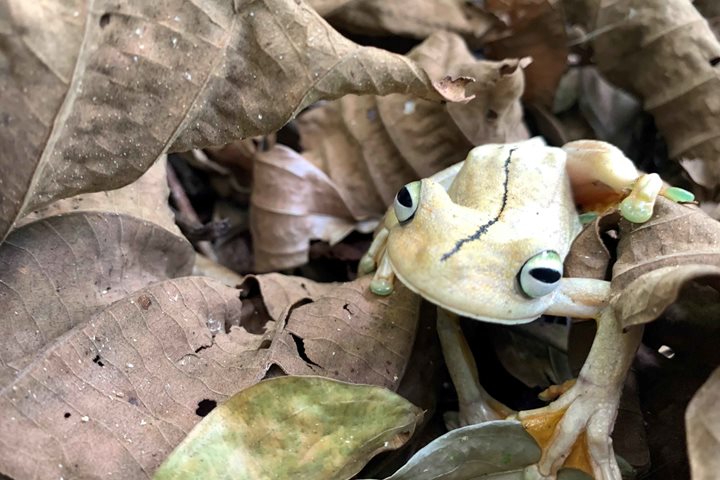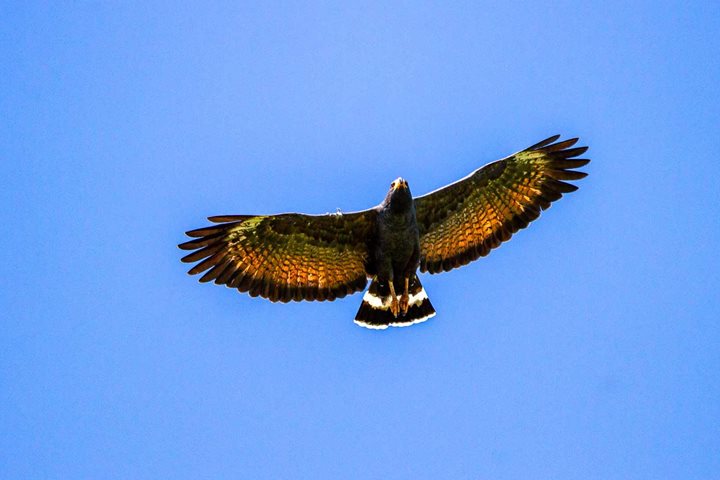After cruising throughout the night from Costa Rica, National Geographic Sea Lion arrived to its morning destination: a lovely sunrise welcomed us to Panama’s biggest marine park, Coiba National Park. A pod of pantropical spotted dolphins escorted us as we approached one of the Islands of the park.
There is a small group of satellite islands in the northern part of this park, one of them is called Canal De Afuera. A lush tropical forest covered the surface of the island and a small white sand beach invited us to go ashore. So without hesitation, after breakfast we geared up and went to explore.
The crystal blue water revealed a gorgeous reef close to the sandy beach. Some of our guest couldn’t resist and went snorkeling while other tried their balance by paddle boarding. Kayaking was the other option. One or the other allowed us to enjoy the hidden treasure of this paradise.
After the exciting morning, we went back onboard and weighed anchor. We cruised south looking for another snorkeling destination. To our starboard side we could see the biggest island of the park, Coiba Island. For many years the Island had 21 prison camps. After the year 2000, the prisoners were relocated in other prisons along the country. Once the prison was closed, the government protected the island by law and it became a World Heritage Site.
The presence of these prisons camp discouraged developers and now we had the opportunity to enjoy the marine life of the park. Its waters hold the second biggest coral reef of the Tropical Eastern Pacific. So as we dropped anchor, we went ashore to a small little Islet that was patrolled by hermit crabs. This white sandy island is called “Granito de Oro”, which means “Little Nugget of Gold”.
All geared up, we went snorkeling. A parade of fishes delighted our explorers as they snorkeled around the islet. Many colorful fishes such as the bicolored parrot fish, blue and gold snappers, giant damselfish, king angel fishes and many others just swam next to us. Amongst the best sightings were white tipped sharks, spotted eagle ray and several hawksbill turtle: these are indicator species that tells us how healthy is the reef.
It was a great day in Coiba National Park. Even though we would have loved to spend more time here, we had to continue our voyage: 200 nautical miles had to be covered in order to reach to the Panama Canal.







